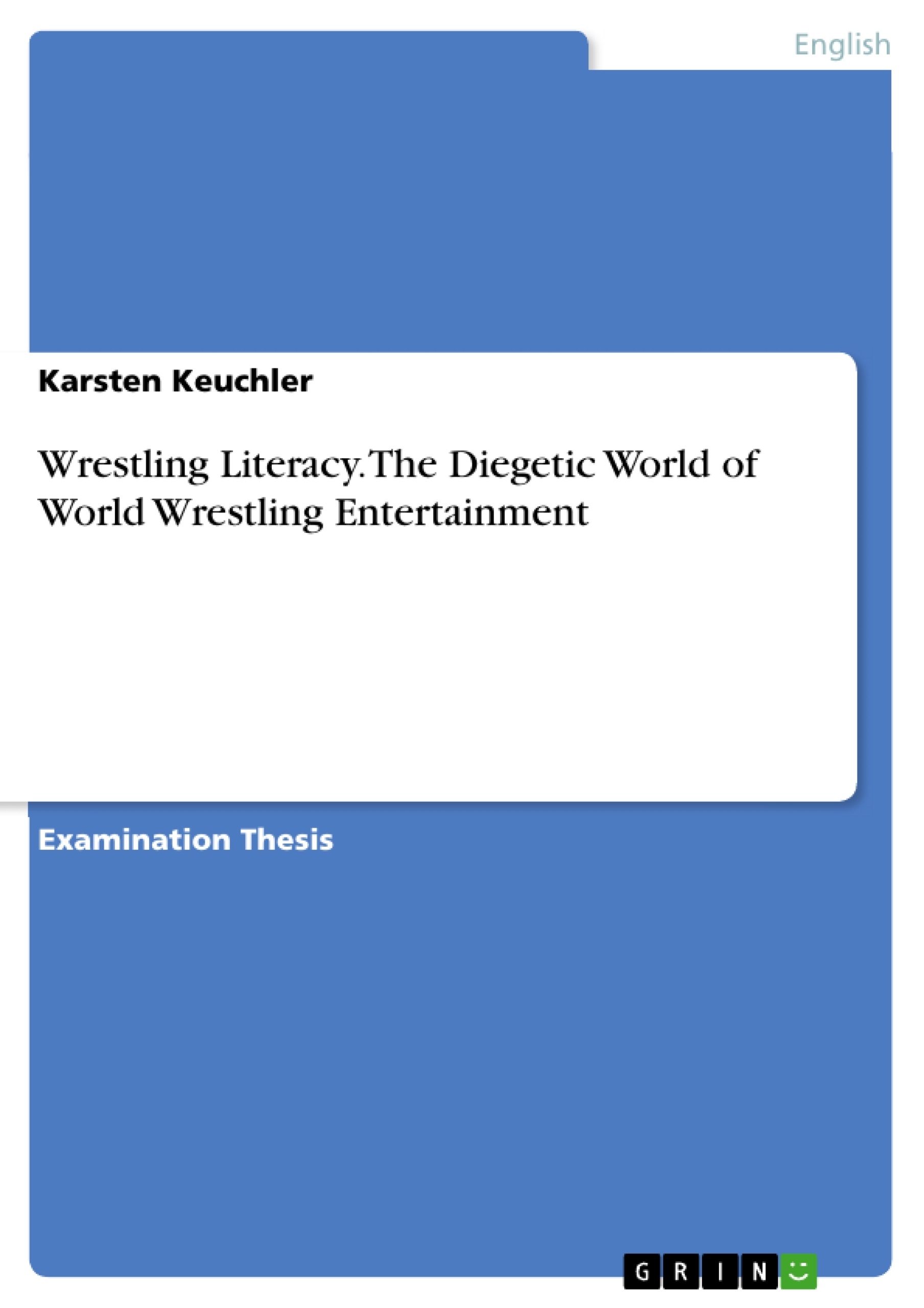This book gives an up-to-date insight into the world of professional wrestling, its history, its mechanisms, and its cultural importance both globally and nationally in the US. The author depicts the diegetic world of the WWE as a genre of its own, a genre that requires expertise from the viewer in order to be interpreted accurately. Accordingly, this paper analyses the way the WWE makes use of semiotic tools and narrative elements. Moreover key issues concerning gender, sexuality, authenticity, politics, ideology, and the fans' role and perspective are addressed. There is also a special focus on how the WWE has been playfully dealing with reality / real events within its fictional, diegetic world since the legendary Montral Screwjob from 1997 - the latter being an aspect which sets professional wrestling, which is widely regarded as part of postmodern "trash culture", apart from other, similar sorts of entertainment. All in all, "Wrestling Literacy" is a wonderful guide for anyone who happens to switch to one of WWE's weekly TV shows (such as Raw, Smackdown, or NXT) without having the slightest idea of what he sees. "Wrestling Literacy" is also a good read for all academics of culture and media studies in general. But "Wrestling Literacy" is a must-read for all wrestling fans, especially those with some degree of academic interest in the subject matter.
Inhaltsverzeichnis (Table of Contents)
- I. Introduction
- II. Theoretical Approaches
- II.1. What Does Media Literacy Mean?
- II.2. Reality in the Context of Media Literacies
- II.3. Representation
- II.4. Roland Barthes
- II.4.1. General Aspects about his Work
- II.4.2. His Observations on Wrestling
- III. The History of Wrestling
- III.1. Its Origins
- III.2. Wrestling Moves across the Big Pond
- III.3. The American Catch-as-catch-can
- III.4. The Rise of Wrestling as a Show
- III.5. Wrestling Moves to Television
- III.6. The Monopoly of the World Wrestling Federation
- IV. The WWE Today
- IV.1. Basic Structure of the Medium
- IV.2. Popularity: Numbers, Figures, Explanations
- IV.3. The Wrestling Match
- IV.3.1. Context
- IV.3.2. The Presentation of the Match
- IV.4. The Role and Perspective of the Fans
- V. Key Issues in the WWE Diegesis
- V.1. Authenticity and Reality
- V.2. Gender and Sexuality
- V.3. Politics and Ideology
Zielsetzung und Themenschwerpunkte (Objectives and Key Themes)
This paper aims to explore the cultural significance and unique characteristics of professional wrestling, specifically as presented by the WWE. The work delves into the history of wrestling and its evolution into a form of televised entertainment. It aims to analyze the complex interplay between authenticity and performance, the role of narrative and storytelling, and the impact of fans and their engagement with the medium.- The evolution of professional wrestling from its roots in traditional wrestling to its contemporary form as televised entertainment
- The relationship between authenticity and performance in professional wrestling, particularly in the context of the WWE
- The significance of narrative and storytelling in shaping the WWE's wrestling matches and broader cultural impact
- The role of fans and their active engagement with the WWE, both within the arena and through online communication
- The cultural significance of professional wrestling as a multimedia genre and its place within contemporary media landscapes
Zusammenfassung der Kapitel (Chapter Summaries)
- I. Introduction: The chapter introduces the topic of professional wrestling and its cultural impact, contrasting the recognition of Olympic wrestling champion Alexander Karelin with the widespread fame of professional wrestler Hulk Hogan. It argues that professional wrestling has achieved greater cultural importance than its Olympic counterpart due to its prominent presence on television and its engagement with storytelling and entertainment.
- II. Theoretical Approaches: This section lays out the theoretical frameworks used to analyze professional wrestling, including media literacy, the concept of reality in media, and representation. It also provides an overview of Roland Barthes' key observations on wrestling, highlighting his analysis of the "spectacle of excess" within the genre.
- III. The History of Wrestling: This section traces the historical development of wrestling, from its origins to its evolution into a televised spectacle. It explores the influence of different styles and traditions, including Greco-Roman wrestling, American catch-as-catch-can, and the rise of wrestling as a form of entertainment.
- IV. The WWE Today: This chapter examines the structure and workings of the WWE, analyzing its popularity and its reliance on storytelling and spectacle. It discusses the importance of fan engagement and the role of online communication and direct crowd interaction in shaping the WWE's narrative and performances.
- V. Key Issues in the WWE Diegesis: This section delves into specific themes and issues within the WWE, examining questions of authenticity and reality, the representation of gender and sexuality, and the interplay of politics and ideology within the WWE's narrative universe.
Schlüsselwörter (Keywords)
The key terms and concepts explored in this paper include professional wrestling, WWE, media literacy, representation, authenticity, performance, narrative, storytelling, fan engagement, and cultural significance. The analysis focuses on the WWE as a unique medium, exploring its hybridity and its role within contemporary media landscapes.- Citation du texte
- Karsten Keuchler (Auteur), 2009, Wrestling Literacy. The Diegetic World of World Wrestling Entertainment, Munich, GRIN Verlag, https://www.grin.com/document/280131



